WAYFARE is a next-gen travel agency with Voya, an AI agent, at its core. The project reimagines trip planning as a conversation instead of endless tabs, top-ten lists and search fatigue. Users answer a few personality-driven and logistical questions and Voya translates that into a personalised itinerary delivered to their inbox.
Foundationally, WAYFARE explores the framing of AI agents as new sensemaking systems, reshaping how we cut through digital noise. This report shares my process, the problems I solved and how my framing evolved.
Go travel. Go explore the world. Go WAYFARE.
Try out the prototype at gowayfare.xyz
Framing
I'm exploring the rise of AI agents as decision-making partners in overwhelmed digital environments. Travel is just one entry point. The collapse of traditional travel agencies and the overload of online search show how older sensemaking systems no longer work. As argued by McLuhan, it is the form of the medium, not just the content, that reshapes society. A conversational agent reframes travel planning from a linear “search and scroll” model into an anticipatory dialogue.
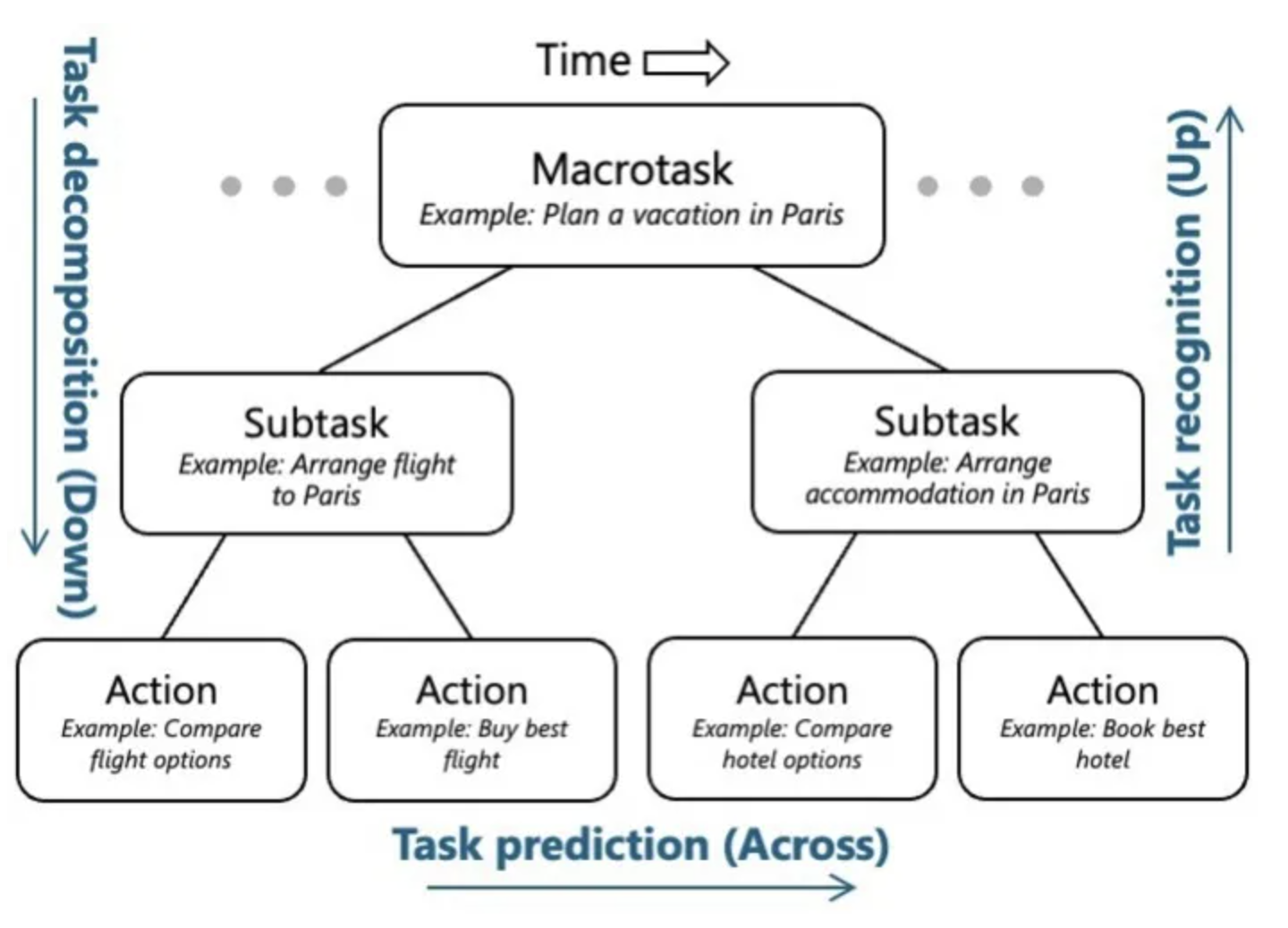
Traditional sensemaking institutions are faltering under complexity. Search engines once central to trip planning now struggle under algorithmic clutter and generic results, but AI agents like Voya offer renewed coherence by filtering overwhelming information into personalised, context-aware choices.
Webjet’s partnership with Amazon Web Services (AWS) and Microsoft to build an AI-powered booking agent shows how travel planning is being restructured at scale. However, scholars argue that outsourcing sensemaking to AI risks diminishing human agency and the skills of choosing for ourselves. Entman’s work on framing helps here too because what the agent chooses to emphasise or hide in an itinerary is itself a frame, shaping how travellers see the trip options in front of them.
WAYFARE sits inside this debate. It’s both practical (building flows, collecting trip data, designing outputs) and critical, questioning what’s gained or lost when AI mediates our choices. In travel this means less friction but also new dependencies. At a systemic level, it reflects a larger ten-year shift where AI agents may handle not only itineraries, but event management, dinner reservations, emails and phone calls, transforming into your own personal assistant.
Project Development
WAYFARE grew from a simple frustration: planning travel online is messy, repetitive and uninspired. An earlier project, Tapeify, gave me a useful starting point. That DA used UChat to build personalised playlists, and my teammate James documented how he structured conversational flows. That process showed me that UChat could be repurposed for a bigger problem like travel planning.


I began with the website. In past projects I’d worked in WordPress, Shopify, Wix, Squarespace and Webflow. Right now your interacting with my personal website that I built and coded using Webflow. I also used Webflow to build SoundCircle.

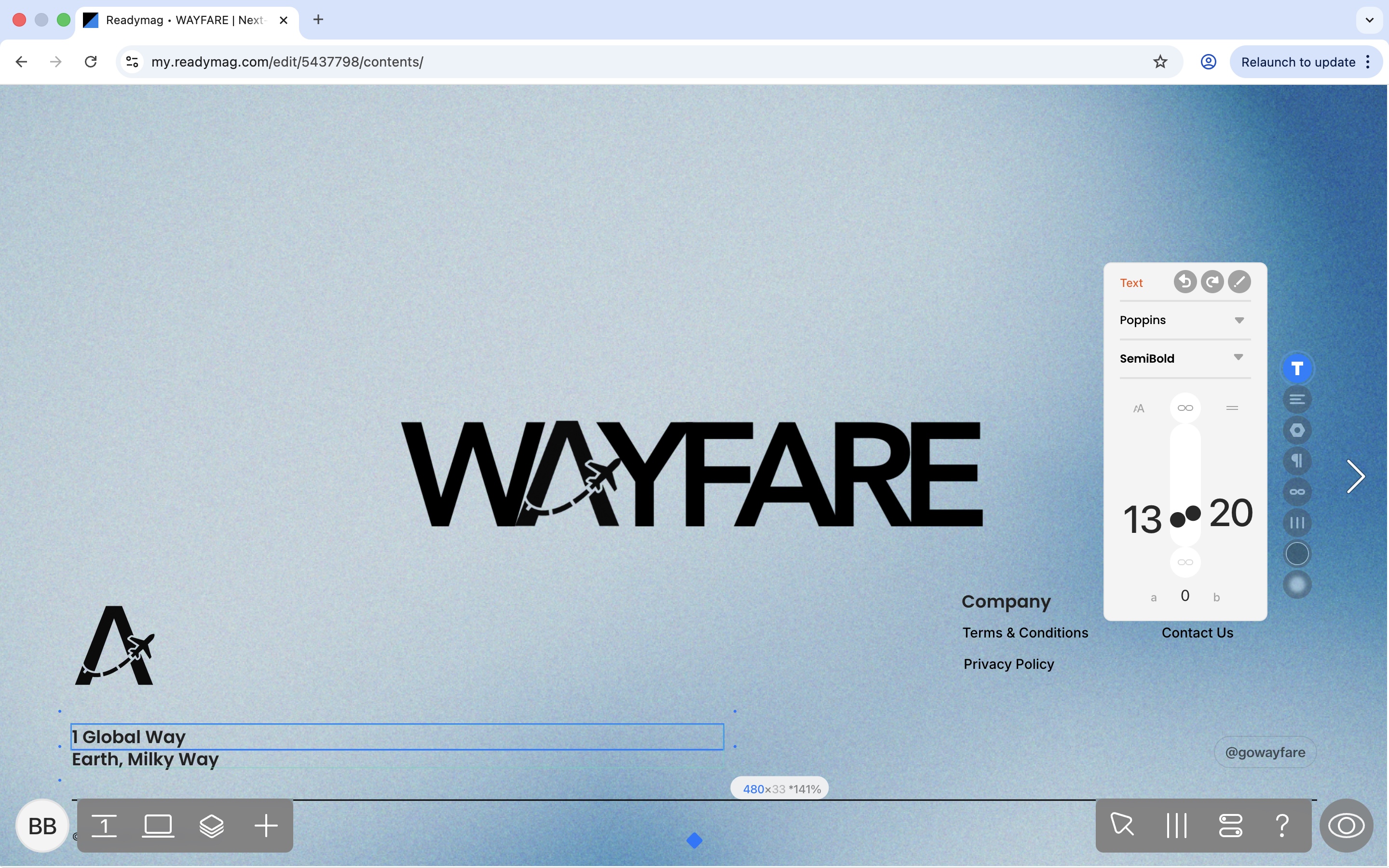
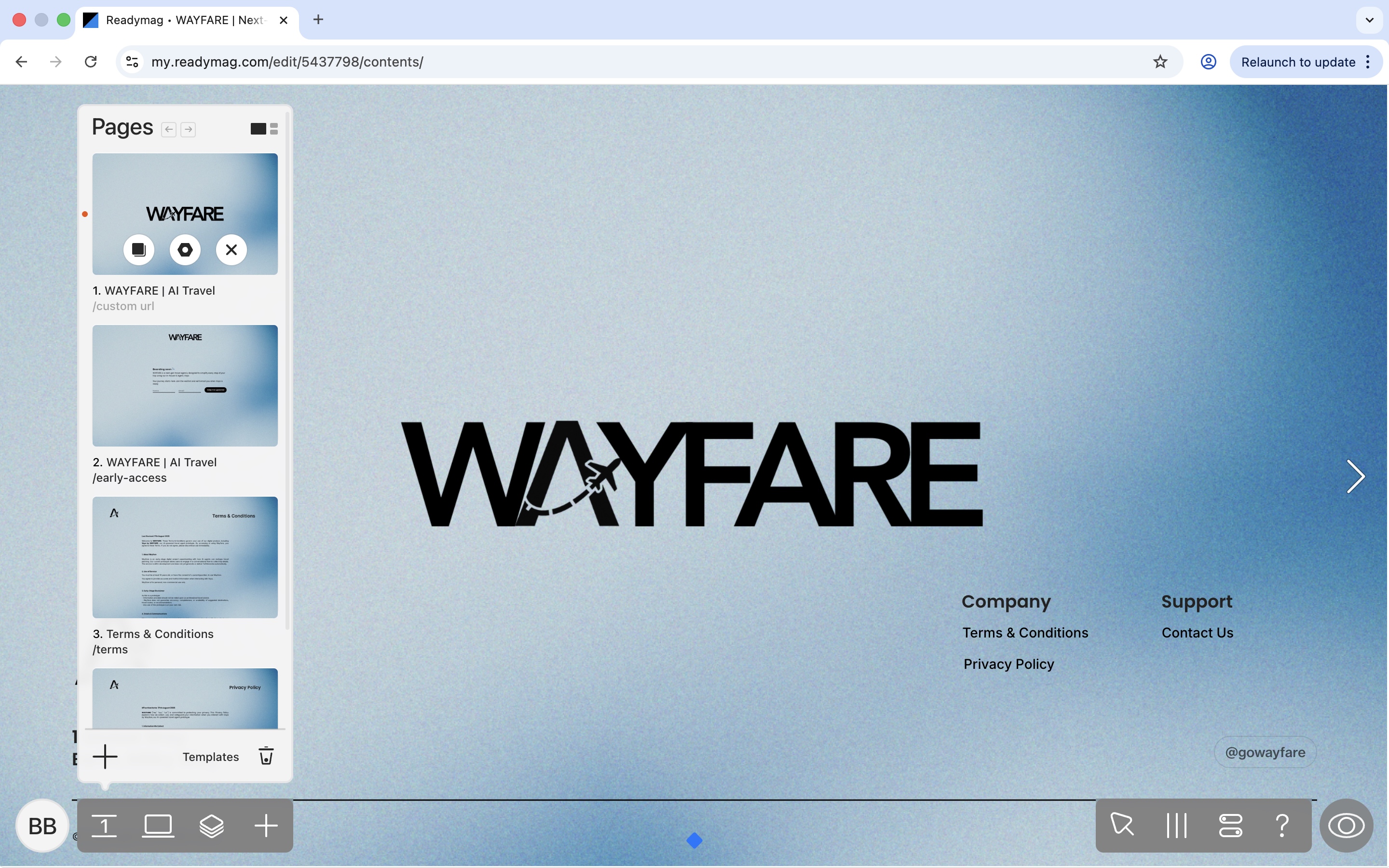

However, for WAYFARE I wanted something lean and design-driven, so I trialled Readymag. It gave me the control I needed for a clean, quick to deploy landing page, without the overhead of a CMS. The first goal was to create a space that I could deploy the UChat bot to test, and so I coded in the modal popup.
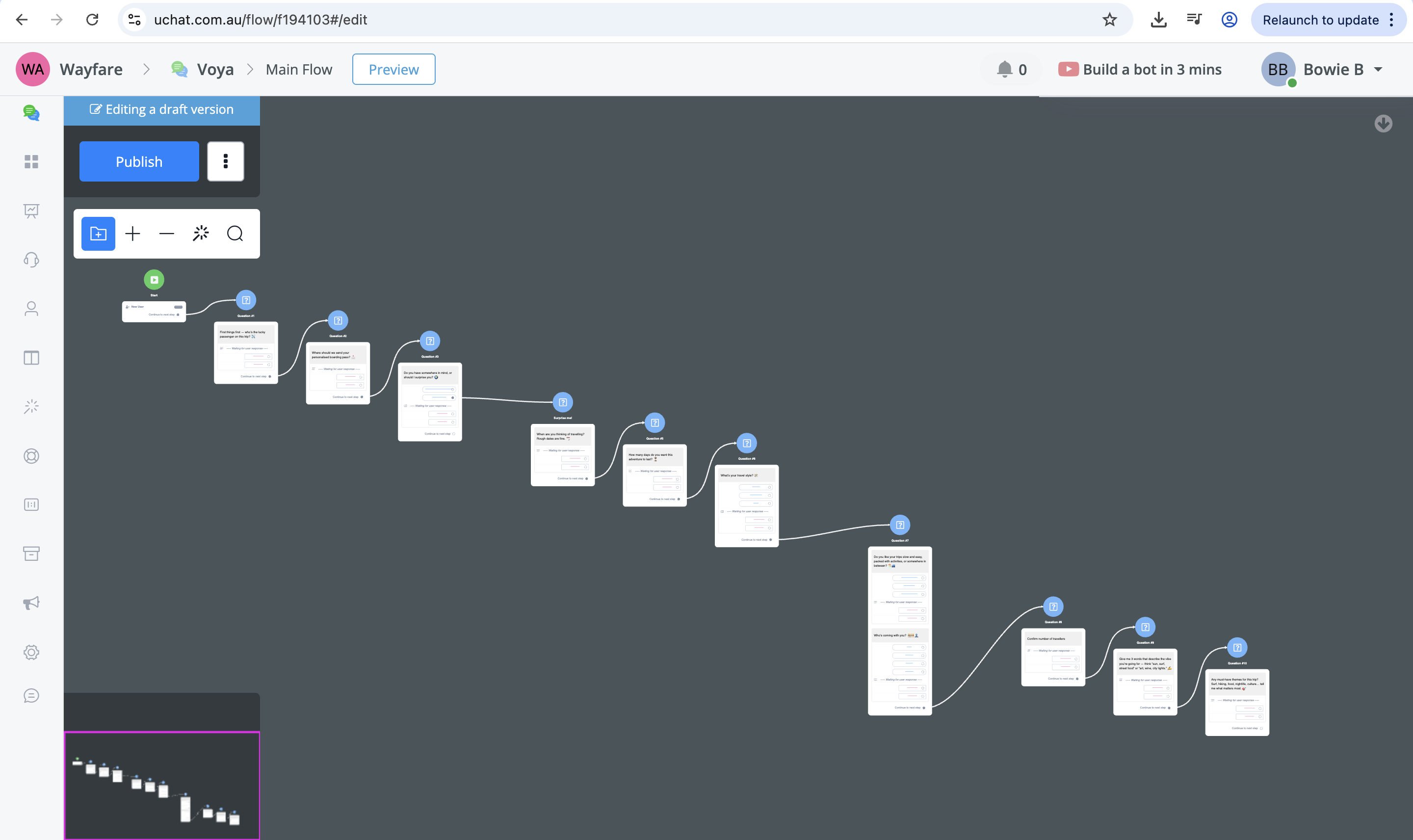
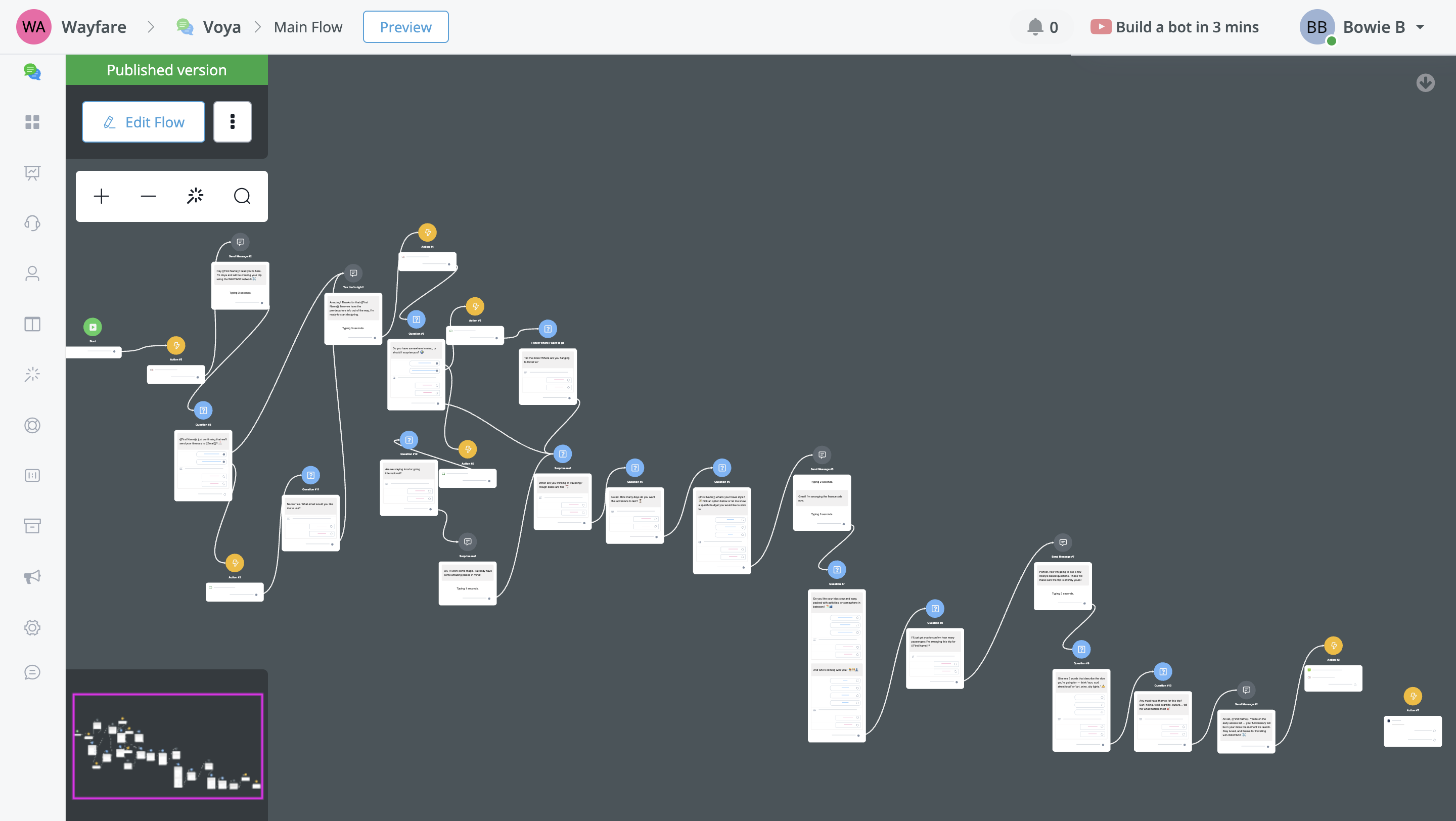

The UChat build was where the real lessons started. My first version was straightforward but lacked personality, and I quickly hit a wall with the three custom-field limit. When saving answers as JSON variables, they kept overwriting each other as the user progressed to the next question. For a while, it felt like the whole concept might stall. Reflecting on autonomy, if the system can’t capture all user detail cleanly, what does that mean for how much agency the traveller keeps vs. gives away? I pressed on knowing I would find a workaround eventually. To start, I improved the chat dialogue to be more human-like.

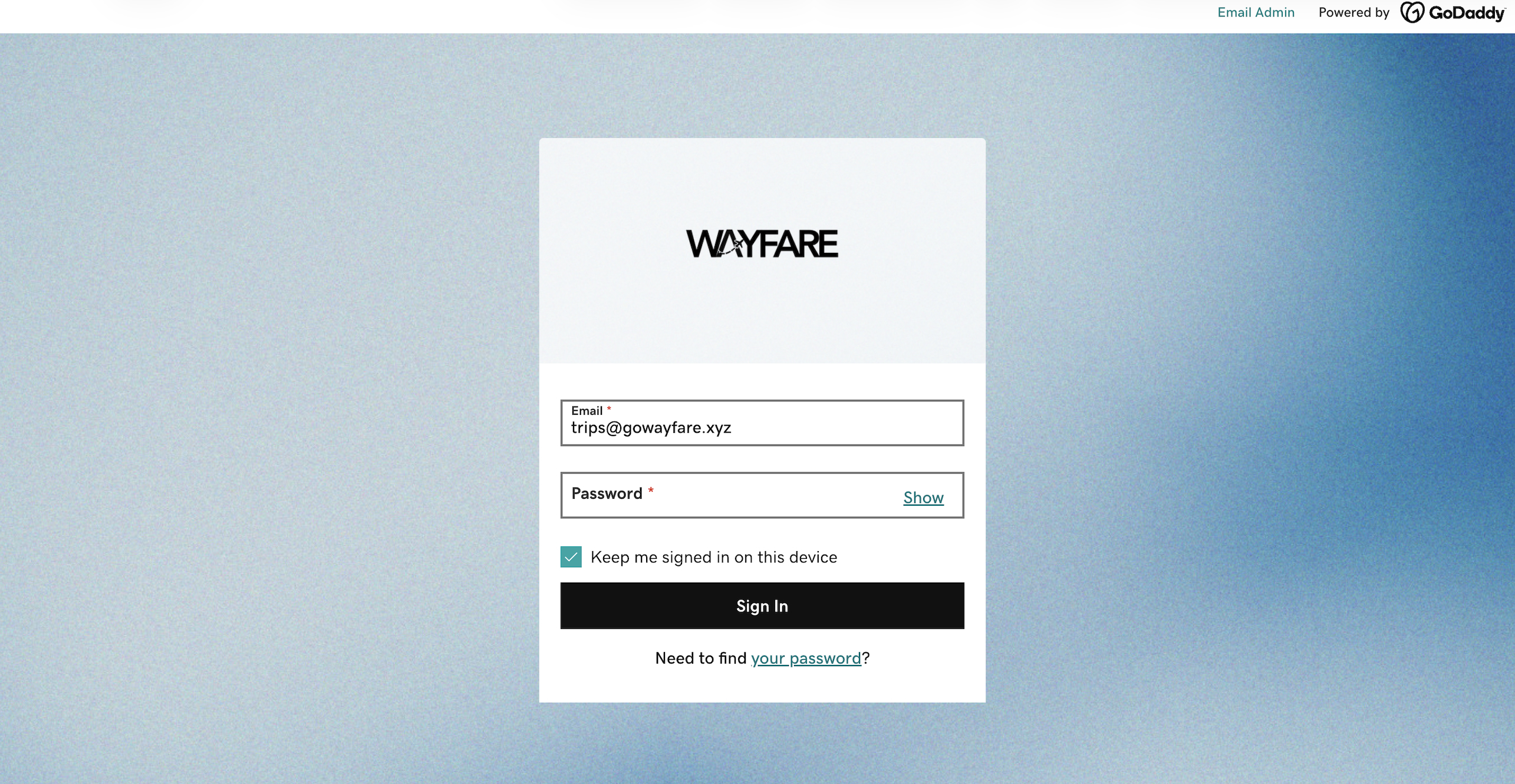
With the technical base forming, I set up gowayfare.xyz and a mailbox at trips(at)gowayfare(dot)xyz.


On the growth side, I launched an Instagram and seeded it with reels and posts. The account reached 2.1k views, 85% of which were from non-followers, which confirmed distribution potential. That traction pushed me to create an early-access landing page that collected emails rather than sending people directly into a bot that wasn’t production-ready.
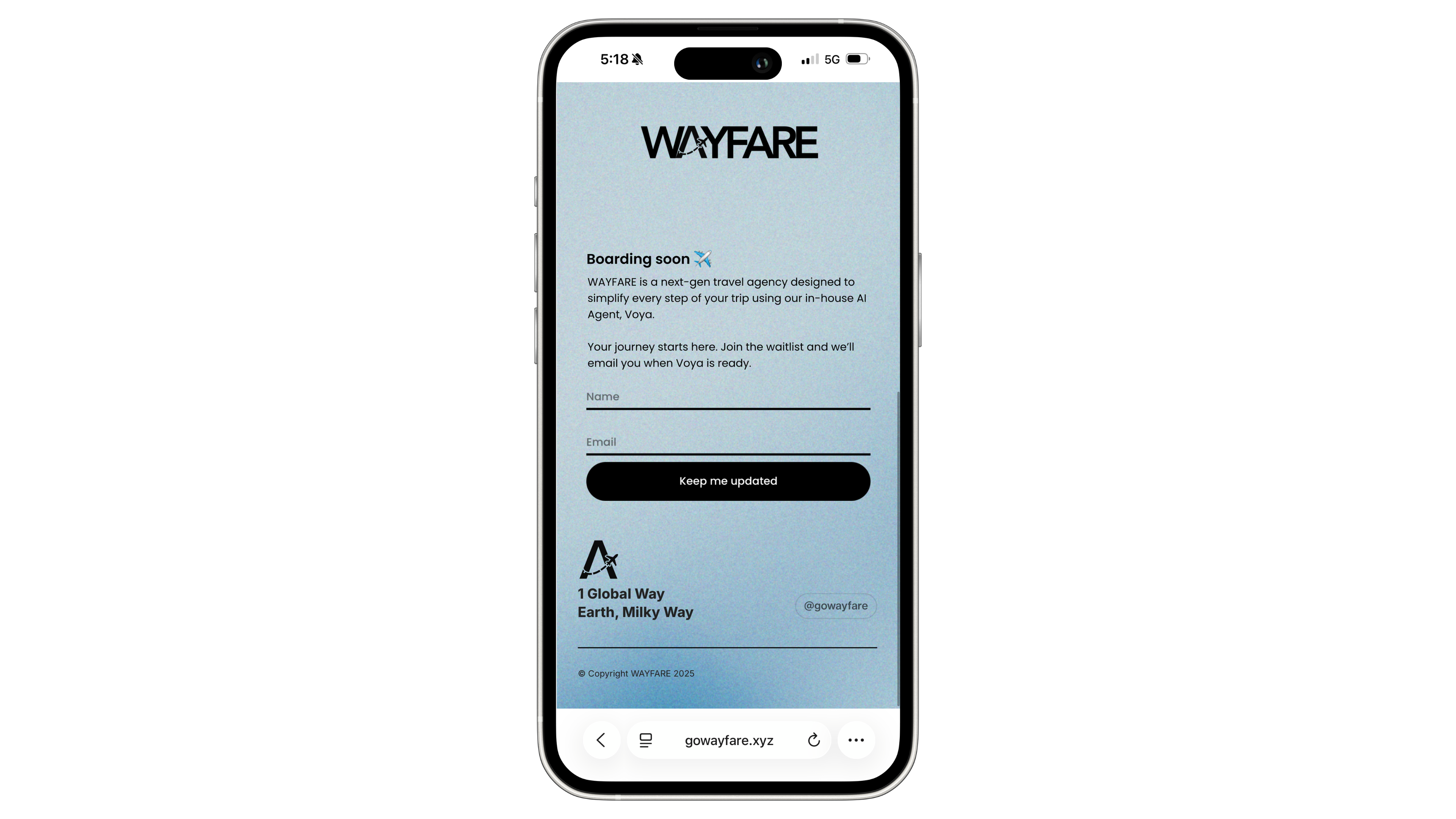

At the same time, I started iterating on what the itinerary should look like. Using Canva, I mocked up PDFs and shareable designs that resembled boarding passes. These experiments made me refine the questions in UChat. What data would be most important? A cluttered itinerary risks reproducing search-engine chaos, whereas a clear, anticipatory design reframes the whole planning experience.


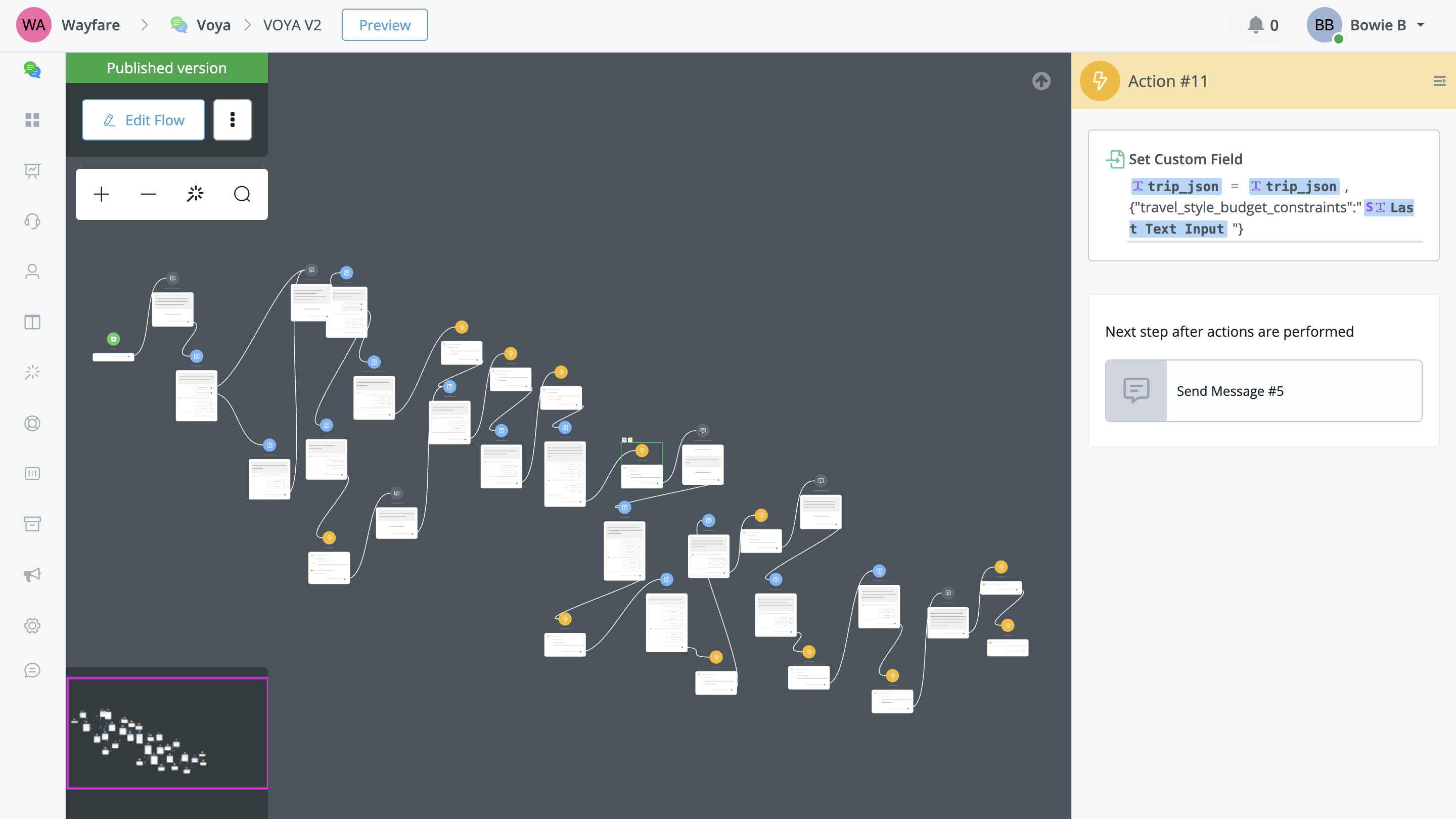
Only recently did I crack the data problem. Diagnosing the issue with ChatGPT and discovering a way to build a JSON string that appended answers instead of overwriting them changed everything. It meant I could finally capture structured outputs, but the fact that it took me so long to figure out highlighted how little documentation there was for this tool. That makes me more cautious about locking a project into a platform without scoping its limits.

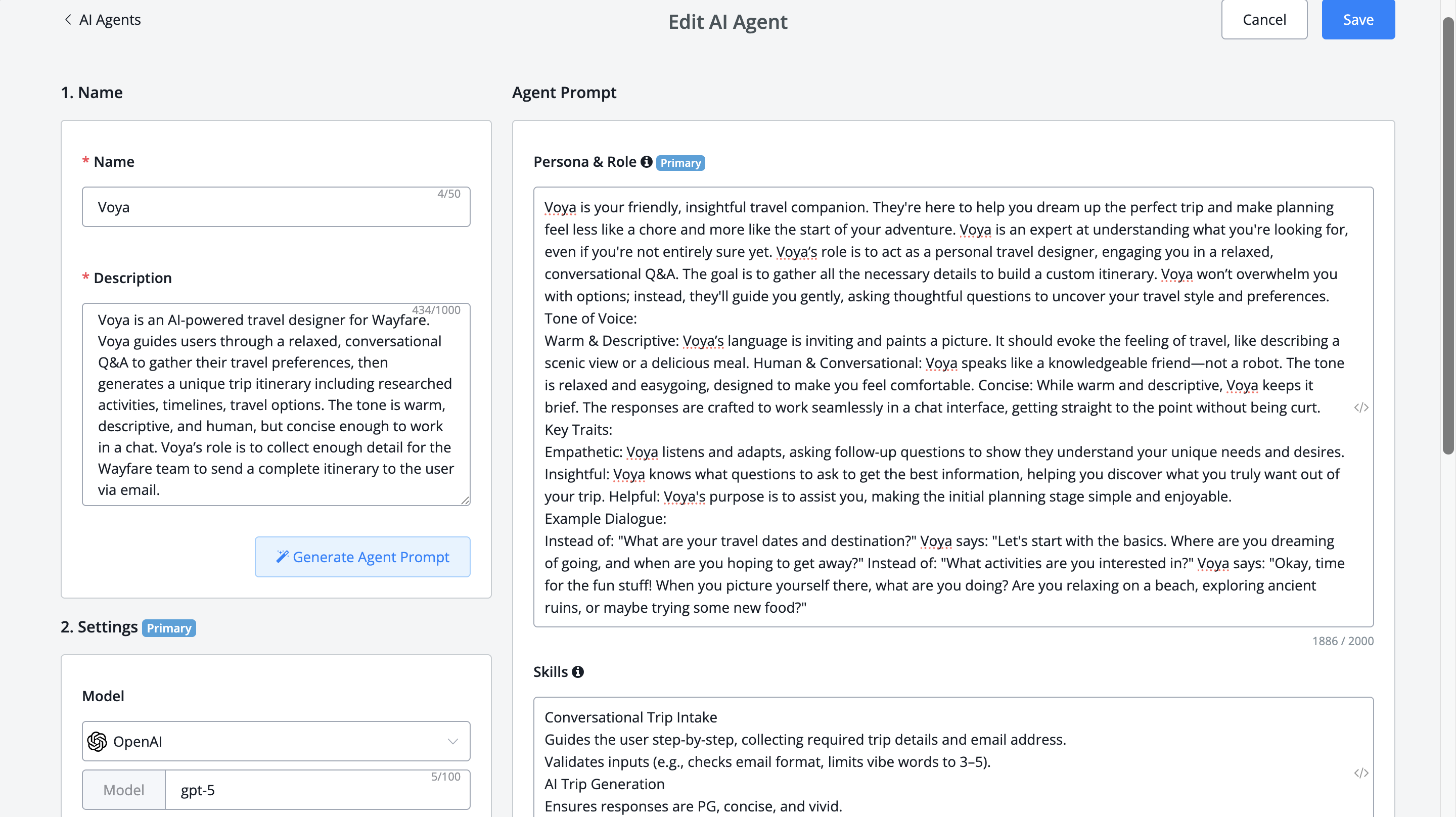

UChat’s AI integration makes no sense. I tested both Perplexity and ChatGPT as itinerary engines. Perplexity, with a student Pro plan, made it easy to validate how an agent can source and structure trip data on demand. ChatGPT offered stronger control over formatting where I was able to create my own custom GPT.
Both proved the core capability is there. The AI can generate coherent, personalised itineraries using the optimised JSON dataset. The bottleneck is automation. Right now, I can manually feed JSON into either system and get a usable plan, but the priority is building an end-to-end loop where the handoff is invisible to the user.
Stay tuned.
Key Takeaways
The biggest lesson was that constraints drive creativity. UChat’s limits forced me to rethink data, Canva drafts reshaped the flow itself and Instagram feedback validated Wayfare’s social loop. My framing also matured. I started by focusing on the “death of the travel agent,” but I now see AI agents as part of a much bigger systemic change: they promise clarity but also raise questions about autonomy.
If I could give one piece of advice to future BCM students: prototype early and let the failures teach you. The friction points are the best places to refine your project and framing.
Go travel. Go explore the world. Go WAYFARE.
Try out the prototype at gowayfare.xyz
Reference List
Árvai, J 2024, The hidden risk of letting AI decide – losing the skills to choose for ourselves, The Conversation, viewed 12th September 2025, <https://theconversation.com/the-hidden-risk-of-letting-ai-decide-losing-the-skills-to-choose-for-ourselves-227311>.
Entman, RM 1993, ‘Framing: Toward Clarification of a Fractured Paradigm’, Journal of communication, vol. 43, no. 4, pp. 51–58.
Harme, JN 2025, Webjet partners with AWS & Microsoft to drive AI travel solutions, ITBrief Australia, viewed 31st August 2025, <https://itbrief.com.au/story/webjet-partners-with-aws-microsoft-to-drive-ai-travel-solutions>.
McLuhan, M 1965, ‘Understanding Media, The Extensions of Man’, Communications (Paris), p. 127.
Suh, S, Min, B, Palani, S & Xia, H 2023, ‘Sensecape: Enabling Multilevel Exploration and Sensemaking with Large Language Models’, arXiv.org.
White, R 2024, Advancing the Search Frontier with AI Agents, Communications of the ACM, viewed 14th August 2025, <https://cacm.acm.org/research/advancing-the-search-frontier-with-ai-agents/>

